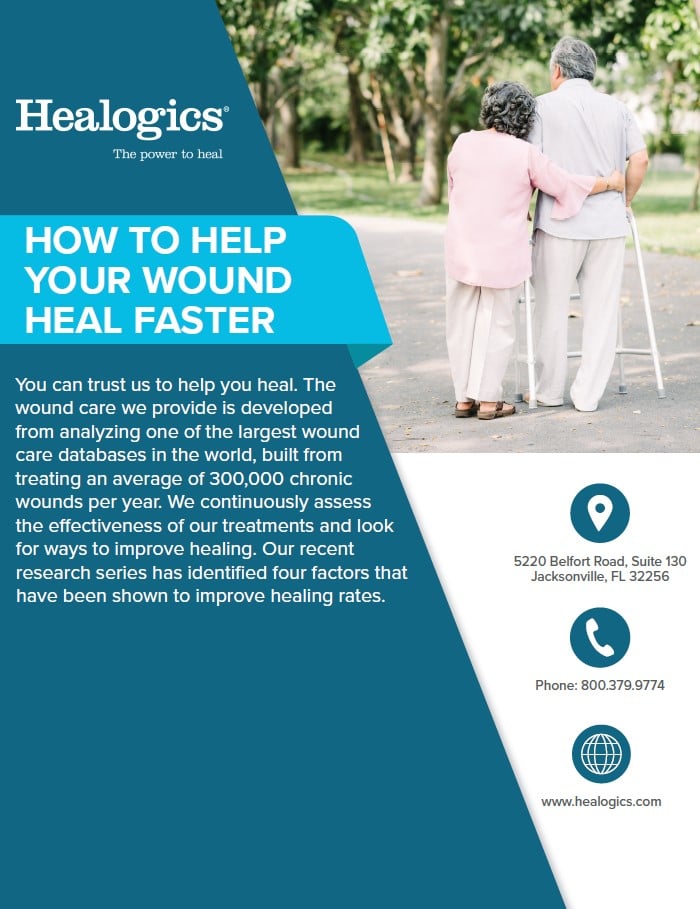Education, Prevention and Care for
Non-Healing Wounds
About Wound Care Awareness
This annual campaign began in 2014 when we recognized that nearly 7 million Americans have a non-healing wound. Lack of awareness leads to fewer screenings, limited interventions and wounds that can progress to severe complications or even amputation.
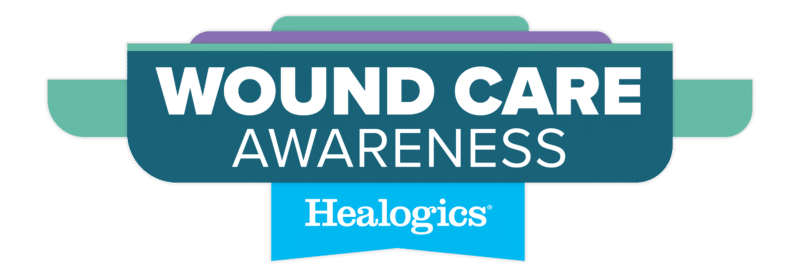
Click Here for Resources
Common Types of Chronic Wounds
Diabetic Foot Ulcer
- Typically occurs on the feet, heel, or toes
- Often, there is little to the ulcer itself
- Skin on the legs and feet may be dry
and flaky
Arterial or Ischemic Ulcer
- Leg pain may worsen when the leg
is elevated - Shiny or tight, hairless skin
- Skin that is cool or cold to the touch
- Minimum drainage from the wound
- A round wound with even edges or
the look of being punched out
Venous or Stasis Ulcer
- Leg pain or achiness
- Swelling in the leg, especially at the end of the day
- Discolored skin in the area above the ankle
- Moderate to heavy drainage from the wound
Pressure Ulcer
- Most commonly found over a bony prominence
- Ulcers begin as pressure injuries with non-blanchable redness
- If untreated, subcutaneous fat becomes visible
- Continued tissue loss leads to exposed muscle, tendon or bone
Resources for People with Non-Healing Wounds
Your ability to heal can be affected by diabetes, heart disease, cancer or other immune-compromising health conditions.
Learn more about who is at risk and how to prevent wounds with our educational resources.
Diabetic Foot Ulcers (DFUs)
Understand the risks of diabetic foot ulcers,
learn steps to prevent them and options for treatment.
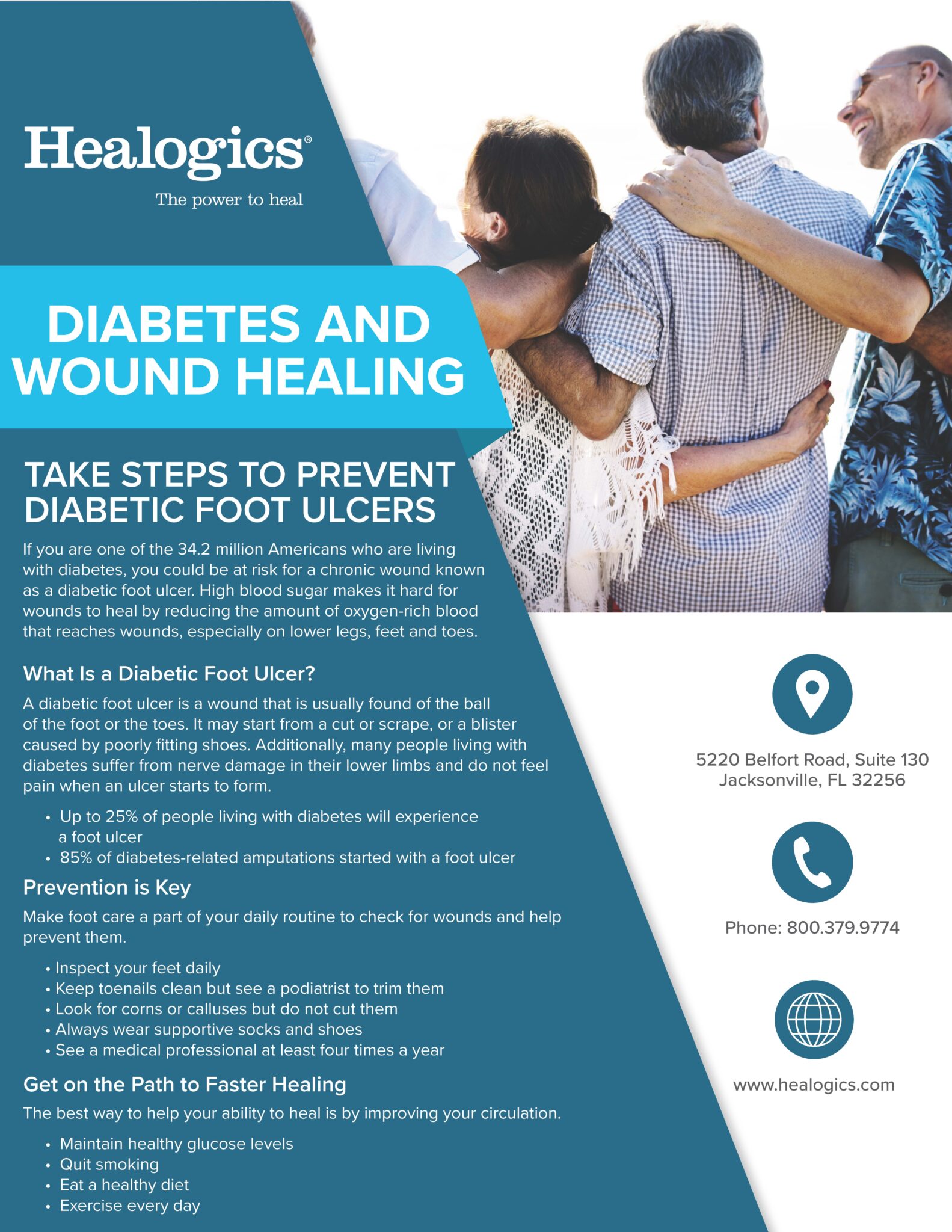
Arterial and Venous Ulcers
Understand the risks of arterial and venous ulcers,
learn steps to prevent them and options for treatment.
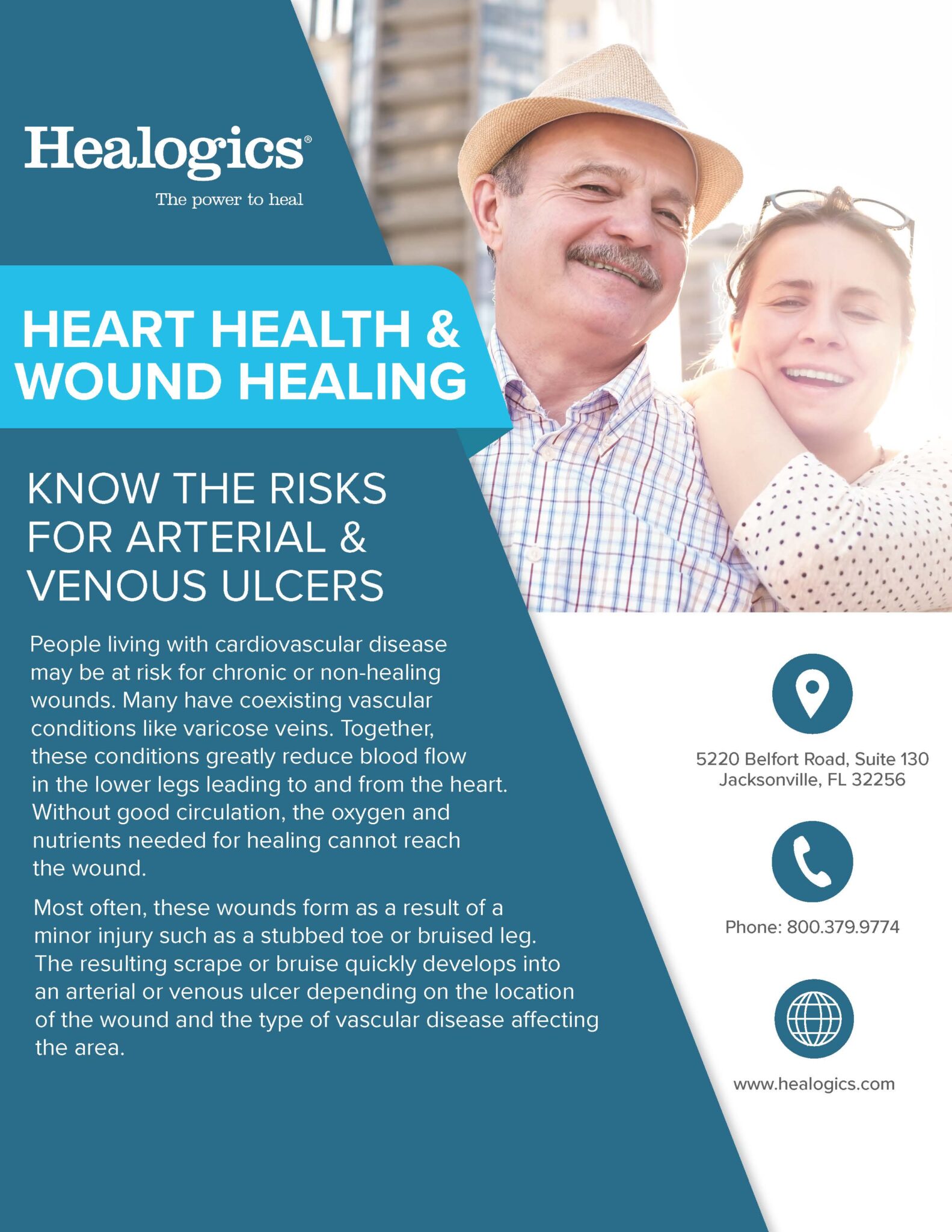
Advanced Wound Care Treatments
Learn more about the advanced wound care
treatments that can help chronic wounds heal faster.
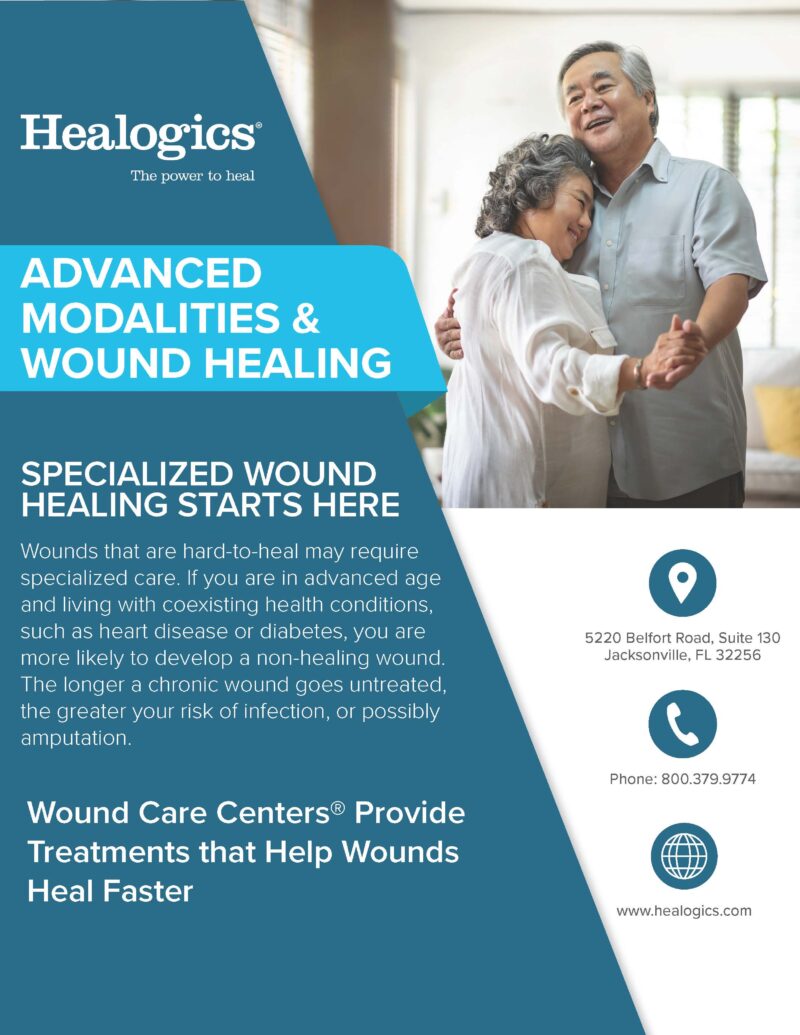
Wound Science Research Improving Healing Outcomes
If you or a loved one are living with a coexisting condition you may be more likely to develop a chronic wound.
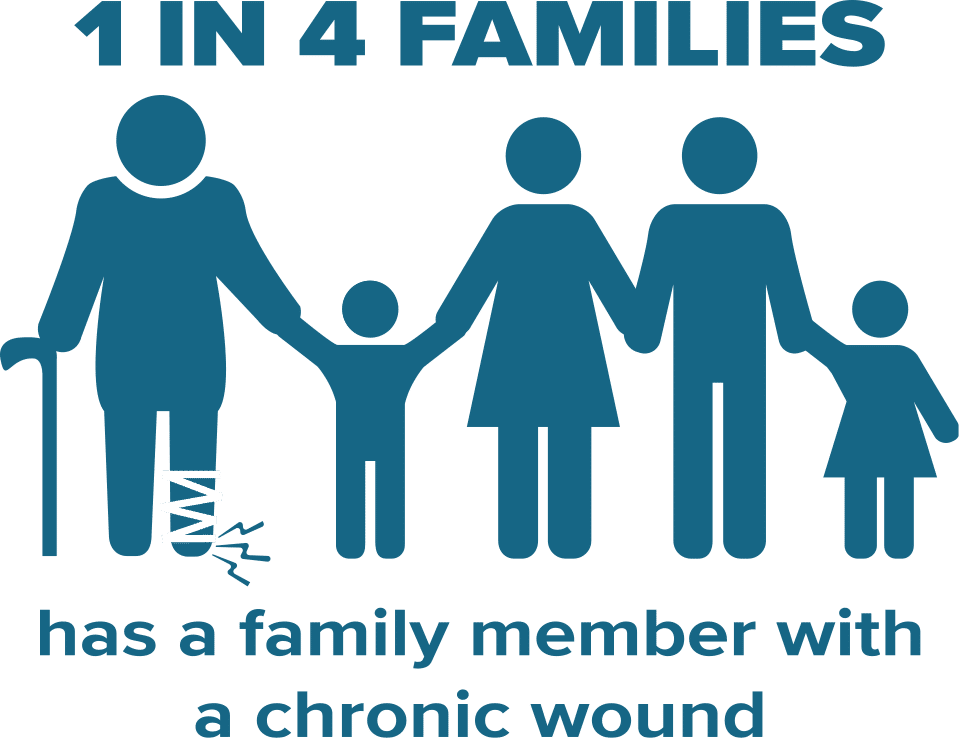
Start your journey to healing.
We partner with more than 600 hospitals nationwide to provide standard and advanced would care for patients with chronic, non-healing wounds. Find a Healogics Wound Care Center near you and get on the road to healing.

